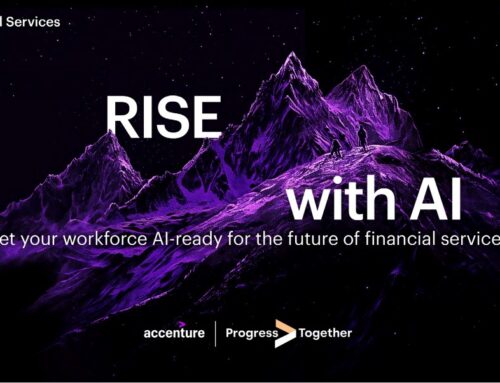By Rebecca Deegan, Chief Sustainability Officer, Association of British Insurers
Diverse leadership teams are better equipped to understand and respond to the needs of a diverse customer base. Socio-economic diversity is important given insurance is fundamentally about managing risk and leaders who have experienced financial instability will understand firsthand the risks faced by these groups of customers. This understanding can lead to more comprehensive and inclusive risk management strategies, products and services.
In addition, diverse and inclusive senior leadership teams are less likely to experience groupthink, which can arise when senior leaders have a similar social background and ideology. Greater diversity amongst senior leaders supports well-rounded decision-making that has been informed by a range of perspectives. When coupled with inclusivity this creates a culture where staff can challenge, speak up and raise concerns. Groupthink and lack of inclusion can lead to firms missing, underestimating, or even ignoring risks.
Regulators
Owing to the link between a lack of diversity and inclusion, governance and risk management regulatory bodies are increasingly scrutinising companies for their equity, diversity and inclusion practices. Regulators play a crucial role in ensuring that firms they oversee exemplify good practices and behaviours, including in the realm of DEI. Both the FCA and PRA have recently consulted on diversity and inclusion. In their consultation, they proposed that firms can voluntarily submit data on their employees’ socio-economic background, in addition to mandatory reporting on characteristics protected in the Equality Act 2010. However, the Treasury Select Committee recommended that regulators should not encourage firms to collect additional data from their employees to better understand the diversity of their workforces.
Our view at the Association of British Insurers (ABI) is that what doesn’t get measured, won’t get managed. Without improved data being used to measure and create accountability for equity and inclusion at the highest levels of a firm – how are we going to deliver long lasting change? We’ve seen that reporting on gender and ethnicity have had a positive impact on representation – according to ABI data the representation of women on boards has increased from 19% in 2017 to 32% in 2022, and ethnic minority representation at board level has increased from 2% in 2019 to 6% in 2022. There is still work to do, but transparency creates accountability.
Strengthen reporting
We’re not the only country looking to regulators to drive DEI across the insurance sector. The IAIS (International Association of Insurance Supervisors) has also published an Application Paper on supervising diversity, equity and inclusion globally. We support the IAIS’s proposal to strengthen reporting on socioeconomic diversity across the insurance sector globally so that the sector can adopt data-driven approaches to improving socio-economic diversity, including amongst senior positions.
We’ve long advocated for a proactive approach to data collection, and we’ve encouraged the regulators to ensure DEI responsibilities are assigned to firms’ senior management. The ABI and its member firms are deeply committed to addressing all relevant diversity characteristics with the same level of attention as legally protected characteristics so that we can track progress and identify barriers. This must include socio-economic background as people from higher socio-economic backgrounds are more than twice as likely to be in senior roles across financial services as those from lower socio-economic backgrounds (Bridge Group, 2023). By progressing with the regulators’ plans to help firms develop robust data-informed strategies, we can welcome a new era of inclusivity, where everyone can thrive regardless of their background.
Accelerate progress
All this being said, embracing socioeconomic diversity must be more than meeting regulatory requirements, quotas or ticking boxes. DEI is about the fundamental ethos of an organisation and only by embedding DEI considerations into the very fabric of an organisation’s governance, can we accelerate progress, foster healthier workplace cultures and bolster the UK’s competitive edge in the global financial services arena.
In 2022 the ABI published our DEI Blueprint – a comprehensive sector-wide strategy to make the insurance and long-term savings industry the most diverse, equitable, and inclusive sector of the UK economy. This concrete work plan supports our sector to recruit people from all backgrounds and create an environment that enables everyone to reach their full potential. This creates a virtuous circle where people from broader walks of life can thrive and reach leadership positions creating more diverse leadership teams that are more likely to champion policies that promote equity and inclusion.
As with any strand of DEI, it is important to recognise that each of us has many life experiences and characteristics that intersect and influence how we show up at work and how others perceive us. We need an intersectional approach to improving socio-economic diversity amongst leaders in the insurance sector. For example, the barriers faced by a woman from ethnic minority and low-income background are different from those faced by a white man from a similar economic status.
Strategic necessity
In conclusion, socio-economic diversity is not just a nice to have, it is a strategic necessity in the insurance industry. It brings a wealth of perspectives that drive innovation, improve risk management and enhance customer relations. By embracing an intersectional approach to socio-economic diversity, which is data-driven, the sector can better serve its customers, meet regulatory requirements, attract and retain top talent, and ultimately secure its relevance and resilience in a rapidly changing world.
Rebecca recommends
Social class is key determiner of who secures career progression in financial services – The Bridge Group




